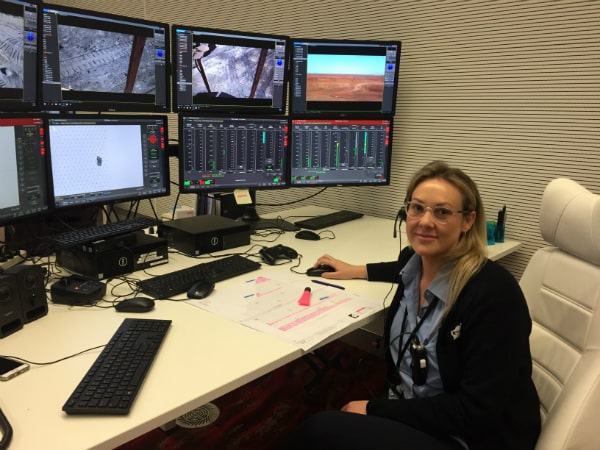Technology is embraced as a new way of mining as much as it is a new way of life. Vanessa Zhou speaks with mining experts in Australia and Sweden to get a closer look on how it’s been integrated.
Digital technology is leading to significant changes in the way mining operations are conducted, and the impact can be felt site-wide.
Technology has changed the way things are done, from exploration through to project conception and execution, to mining operations and maintenance, to the logistics of road, rail, port and shipping operations.
Just as key processes and job roles in the wider society have been and are being changed through digital technology, the same can be said for the mining sector, according to Neometals director Jennifer Purdie.
Although the overall change can be transformational, a lot of it is incremental rather than transformative in the same way as in daily lives.
“People working in the sector are changing the way they work and their expectations of the workplace just as they are changing what they are doing at home and in their leisure time,” Purdie tells Safe to Work.
“Different people will handle change differently depending on the individual impacts on what they do day to day in their role and their own circumstances and preferences.”
Roy Hill employee Annette Baker, for example, was working in the company’s remote operations centre (ROC) as a controller dispatch for the truck fleet. She later expressed an interest in taking on a new role within the company, leading to her current position as drill controller.

Baker’s transition was made possible despite her minimal drilling experience, using Roy Hill’s newly developed training plan.
Roy Hill began its transition to autonomous drills in April 2017, with control fully centralised within the company’s ROC in May this year (involving a fleet of nine Epiroc Pit Viper 271 drills). The project has been met with a positive response from Roy Hill’s employees.
“Previously, drillers were operating in an exposed, hot environment at our mine site. The conversion to an autonomous drill fleet meant these employees were able to transition their roles to Perth and operate up to four drills per person using a control console and a screen working from an air-conditioned office at the ROC,” a Roy Hill spokesperson says.
Receptivity v resistance
Some resistance is understandable when considering digitalisation in traditional mining organisations.
A new workplace environment has its own issues of skills, personal integrity and work environmental problems, leading to workers’ resistance during a transition period, according to Luleå University of Technology chair professor of human work science and dean Lena Abrahamsson.
The underground workplaces in the Swedish mining industry are a context where digitalisation processes in a traditional organisation are extra visible, Abrahamsson says in her think piece, Gender perspectives on the impact of technological change in mining.
Sweden’s mining industry is “not really unique” compared to the global mining industry, where many challenges and opportunities are shared.
This includes the adoption of a high level of new technology, including remote control, automation and digitalisation, with the ambition for even more.
“But at the same time the Swedish mining sector has, in some ways been a reluctant context when it comes to changes at the workplaces … (including) changes related to new technology,” Abrahamsson says.
“The symbolism of mining work, the mineworker identity and culture have for a long time stayed in an old-fashioned mode in many aspects, at least in relation to what the new technology, such as digitalisation and automation, imply.”
Resistance to digitalisation typically arises from a fear of change around roles and the new skillset required to be successful in the role, according to Roy Hill.
A key contributor to any resistance can be uncertainty or lack of exposure to technology.
Roy Hill’s focus on providing career development pathways ensures there is a clear training plan in place, including any training required on using more advanced digital technologies.
In fact, there have been no redundancies as a result of Roy Hill’s move to autonomous drills.

“Automation projects are always still predominantly about people. This (ROC) project has highlighted that by being open, transparent and committed to people’s development, advanced technology projects can be implemented in conjunction with enriching our people’s career paths,” Roy Hill head of mining Ian Wallace says.
Purdie continues: “People I have worked with in mining are all keen for improved safety in the workplace, and often where there is reduction in manual intensity, this also makes work safer and easier for all.
“A particular benefit may be that some older workers may find it easier to continue in the workforce for longer.”
It is, however, important for mining companies to be able to address questions relating to employees’ role evolution to appease resistance.
These questions are ‘Do they have the skills for new roles or will they be trained?’, ‘Will their jobs disappear, and if so what else will they be able to do?’ and ‘What is the impact in terms of salary and conditions?’
Purdie believes that occasional physical presence and a level of experience on site is still required for those working in ROC to be the most effective, though technologies may overcome this need in the future.
This article also appears in the July–September edition of Safe to Work.


